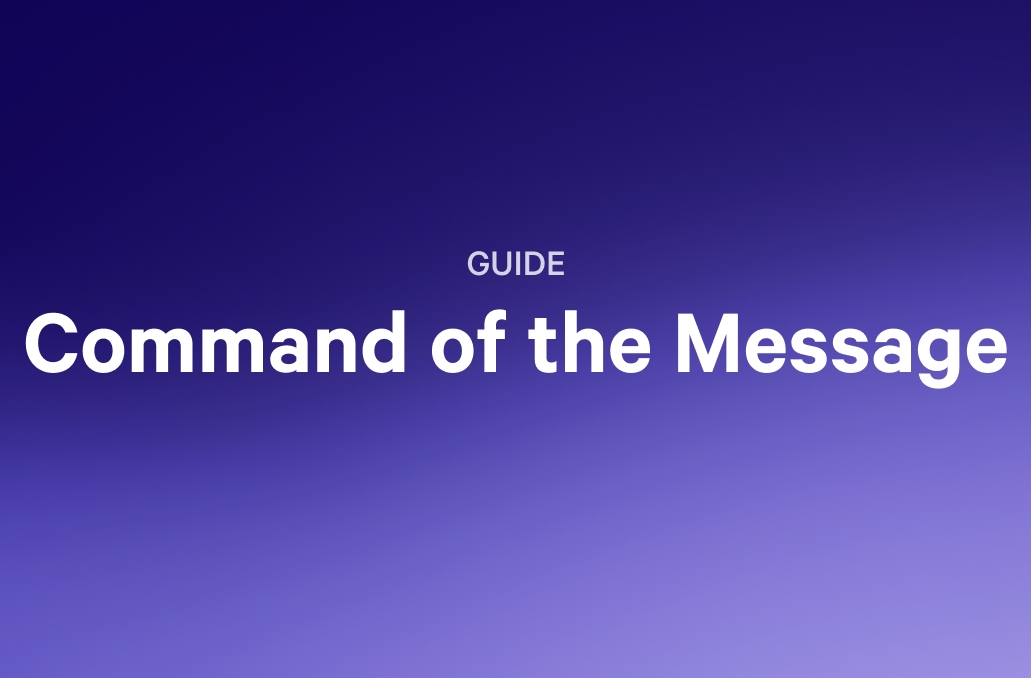Christopher Nolan’s 2010 masterpiece, ‘Inception,’ is the story of a team of corporate spies, each with their own set of skills and abilities.
Tasked with implanting an idea in a powerful CEO's sleeping mind, the specialists spend months preparing the personalized resources and strategies required. They go to work, infiltrating the dreams of different board members to obtain the exact insights required to convince the CEO - the ultimate decision-maker.
Christopher Nolan’s biography doesn’t mention any sales experience. However, his fictional team of ‘extractors’ would find themselves well-suited to the high-stakes, research-intensive world of target account selling. Although target account selling doesn’t involve spying (or drugging anyone), a well-implemented target account selling approach is as complex and multi-layered as any Nolan film. In this article, we'll take a deep dive into the world of target account selling. We’ll discuss the different components needed to be successful and help you decide if it’s a good match for your business.
What is target account selling?
Target account selling (sometimes called TAS selling) is a sales methodology for higher-quality lead generation, creating valuable long-term relationships with the perfect clients. Cross-departmental teams of sales professionals and marketers conduct intensive research to identify leads based on strict criteria.t
Once these high-value leads have been qualified, the account is thoroughly investigated using all available data. The team then identifies multiple decision-makers to implement a hyper-personalized multipronged outreach strategy. After the deal is closed, the cross-departmental team remains active, sharing data and insights with the customer success team to further refine and elevate the customer experience. Target account selling works by improving the quality of your leads, focusing only on accounts that match your offer and allowing you to play to your strengths.
With Target account selling, you can:
- Improve your customer relationships and increase customer satisfaction
- Increase average customer lifetime value (CLV)
- Waste less time on low-quality leads
- Master your niche and become the ‘go-to’ solution for your market
- Create brand advocates, developing your word-of-mouth reputation.
Target account selling (TAS) vs. account-based marketing (ABM)
Target account selling, or TAS selling, shares several similarities with account-based marketing, or ABM. Both sales methodologies share a cross-departmental approach focused on acquiring high-quality leads.
However, while ABM approaches involve selling to ‘an audience of one’ (or ‘few’, or ‘many’, depending on how you scale your approach), the personalization techniques involved don’t discriminate between different decision-makers within the target audience. It’s only personalized down to the account level.
TAS is arguably the more granular account selling method, taking a single account apart into its multiple decision makers, and tailoring outreach efforts to match the sales needs of each individual.
When is target account selling the right strategy for your sales org?
Tagret account selling isn’t for everybody or every type of business.
To make it work, you’ll need the right kind of customers and the right kind of offer.
There’s so much time spent in the preparation stages of a target account-style sale the pay-off has to be worth the effort.
Complex buying process. If you’re going to divide and conquer with a diversified, hyper-personalized outreach, you’ll need to ensure that your target accounts use buying teams with multiple empowered decision-makers. Your targeted approach has to make each individual’s life easier and add value at every stage of the buying journey.
The Target account sales methodology perfectly fits complex buying processes, letting you significantly enhance the buying experience.
High ticket offer. The sale value has to provide the ROI required to justify the extra hours involved when implementing a target account strategy.
Ongoing revenue opportunities. If your product or service is a one-time-only type of purchase, then TAS might not be for you. This kind of investment in customer relationships works best when combined with a subscription-based pricing strategy, with scope for upgrades, upsells, and cross-sells to help you recoup.
However… even with the right kind of customers and the right kind of offer, it’s important to emphasize that target account sales is a high-risk sales methodology. With so much upfront investment in each qualified lead, lost deals will have a bigger impact on your bottom line.
Mature data strategy. Target account selling relies on a solid set of proven data processes at every stage of the customer journey. From prospecting intelligence to conversation intelligence and customer feedback, you’ll need a fully centralized and properly integrated tech stack that the whole team can rely on.
Well-defined sales goals. What aims are currently defining your business plans? Are you looking to shorten your sales cycles? Do you need to attract (and keep) more new customers? Are you looking to increase CLV? Defining your sales goals will provide you with a clearer picture of the prospective accounts you’re looking to attract.
Internal alignment. If you’re going to share the responsibility for each account between members of different teams, it’s crucial that those teams can collaborate and communicate effectively. You can’t afford the risk of hard-won, time-sensitive account data going astray because someone forgot to tag their colleague from a different department.
So, assuming you’ve got the right offer, customer profile, and infrastructure - how do you go about implementing the target account selling methodology?
The four stages of TAS
The most important thing to remember is that TAS is labor-intensive - particularly in these four initial stages, where you’ll build your TAS process.
However, if implemented correctly, you’ll benefit from a smoother sales cycle with less friction and improved customer relations that will set the tone for a long, satisfying, and lucrative partnership - so don’t be scared to put the work in.
Create your Ideal Customer Profile (ICP)
What type of accounts are you looking to target? In order to answer this question, you can use your existing customers to help you understand as much as possible about the characteristics you should look for in your ideal target accounts.
There’s a wealth of data you can use, and your (hopefully) strong rapport and healthy customer relationship means that you can probably obtain any additional data that’s not captured in your CRM. You’ll need to explore details like:
- Industry positioning
- Company size
- Location
- Age of company
- Budget
- Revenue
- Size of customer base
- Income streams and revenue generation model
- Familiarity with your offer/competitors used previously
Make your ICP as detailed as possible - with the caveat that you’re gathering qualification criteria. If you’re adding points that you wouldn’t ever be able to qualify through research or a discovery call, then they’re probably less of a priority.
It’s also good to find these data points using existing customer feedback (or data captured during sales conversations with conversation intelligence tools). For example, if your best customers typically serve around 2,000 customers, why is your tool the optimal choice for their processes?
Your customer’s journey didn’t start when they bought your product - it started when they set up their business. Each key decision they made brought them closer to you, making your solution the obvious choice.
Understanding that journey and the context in which your product is used is essential. Are they already using a simpler, less sophisticated product to meet their needs? Or are they only just reaching the point where your solution becomes relevant? What other tools will they hope to integrate with yours? Are they tied to a particular ecosystem, such as Salesforce?
Create your buyer personas
This is where the TAS approach really adds value. It’s common to see buyer personas and ideal customer profiles used interchangeably (particularly by marketing teams). However, for target account selling, the buyer persona serves a distinct and separate purpose.
We’ve created an ICP to help us find target accounts. Now, the buyer personas are going to help us locate the key decision-makers. Start with the basics, like:
- Job role
- Areas of responsibility
- Personality traits
- Size of team
- Preferred communication methods
- Personal familiarity with your offer or similar offers
- Level of technical expertise
If you’re ready for TAS, your offer is likely to be complex, with various features designed to provide benefits in multiple operational fields.
Consequently, different decision-makers will investigate your solution from different angles. For example, a CFO will want to know about pricing and ROI, whereas the CTO will probably start with integrations or cloud computing functionality.
Using website analytics with sales intelligence tools can help you get a clearer picture of who’s exploring your offer, the features they’re looking for, and their level of buying intent. (Feed this back on the outreach.) Social media analytics and prospecting tools will help fill out this picture and provide insights about the pain points of each decision-maker.
Create your target account list
Use your ICP to develop a set of strict criteria (and we mean strict - the time and effort involved in target account selling means you need to be very selective about the accounts you chase).
With the right sales automation tools, you can automate the initial stages of your search. LinkedIn filters will help you narrow down to specific industries, company sizes, and locations.
Crunchbase or Owler will provide revenue and funding status data, while current tool usage and tech stack info can be uncovered using Slintel or Wappalyzer.
Don’t be tempted to rush this stage, though. Even if a company ticks all your boxes, that doesn’t mean they make the list.
You need to identify active in-market buyers using buyer intent data. You’ll need to check the health and growth rate of your target accounts, too - this is a long-term partnership you’re looking to create, so you need to assess the levels of risk you may be exposing yourself to in the medium term.
In these later list-building stages, your buyer personas will naturally come into play as well, as you begin to get a sense of the buying team and procurement processes, and scour the LinkedIn profiles of the decision-makers for buyer intent data or any signs they’re already aware of your solution.
Develop your personalized outreach campaigns
You’ve done the bulk of the preparation now. You know exactly what your ideal account looks like, and you’ve got a solid list of companies that fit your ideal perfectly. You probably know the names of several decision-makers at each account, too.
You’ll need to update your list regularly, of course, but the ICP and buyer personas should be solid enough to guide your process for some time. They’ll still need refining as your TAS methodology matures, and your team will continue to provide insights to help develop your new target account selling approach further.
The task of creating your outreach campaigns will effectively become a stage of your sales cycle, however, as each element will be designed specific to the needs of an individual decision-maker at your target account.
However, the creation of buyer personas means you can also automate elements of this content creation, with sequences and templates you can continually fine-tune to streamline the personalization process.
With the right content creation tools, you’ll be able to pull analytics data from your sales collateral too, which you can use to improve your buyer personas and measure campaign engagement.
Target account selling template
Qwilr is an ideal sales tech stack addition for any sales organization adopting the TAS methodology.
With hundreds of existing templates, you can create a wide range of sales collateral perfectly matched to each buyer persona. With intuitive content management, you can personalize your templates almost instantly and update multiple templates to align with your chosen target account.
For example, here’s a template designed with expert B2B sales coach Nathan Clark geared specifically for CFOs. This CFO-personalized proposal template will make a strong economic case for your product through financial impact assessments and investment summaries that perfectly target the main concerns of any CFO.
Frequently asked questions
What is target account selling?
Target account selling (TAS) is a sales methodology used to generate high-quality leads and create valuable long-term relationships with the perfect clients. Cross-departmental teams of salespeople and marketers conduct intensive research to identify leads and identify multiple decision-makers to implement a hyper-personalized multi-pronged outreach strategy.
What are the benefits of target account selling (TAS)?
With the TAS sales methodology, you can:
- Improve your customer relationships and increase customer satisfaction
- Increase average customer lifetime value (CLV)
- Waste less time on low-quality leads
- Master your niche and become the ‘go-to’ solution for your market
- Create brand advocates, developing your word-of-mouth reputation.
What are the disadvantages of target account selling?
TAS is a powerful methodology, but it’s not for every business or every sales rep. It’s time and research-intensive, and lead qualification is strict, using very narrow criteria. Lost deals also impact your bottom line more, so a strong product and effective sales process are essential.
The bigger the risk, the greater the rewards
Any account selling strategy contains an element of risk both for the business and the individual sales rep. The more time invested in one account - where the potential buyer may choose to walk away at any moment - the more you reduce your overall opportunity for sales activities elsewhere.
However, the rewards (if you get it right) can be massive, allowing you to develop a platform and reputation so strong it’s almost self-sustaining.
If your market and offer warrant it, and your product and processes are rock-solid...target account selling might be the methodology that finally puts you on the map.
You’ll need to ensure you don’t waste a minute more than is necessary. That's why proposal software like Qwilr, which allows you to personalize your sales collateral at scale, should be a cornerstone of your account selling sales strategies. Want to see how this might help your organization manage a target account sales program? Reach out today to schedule a demo.
About the author

Dan Lever|Brand Consultant and Copywriter
Dan Lever is an experienced brand consultant and copywriter. He brings over 7 years experience in marketing and sales development, across a range of industries including B2B SaaS, third sector and higher education.


